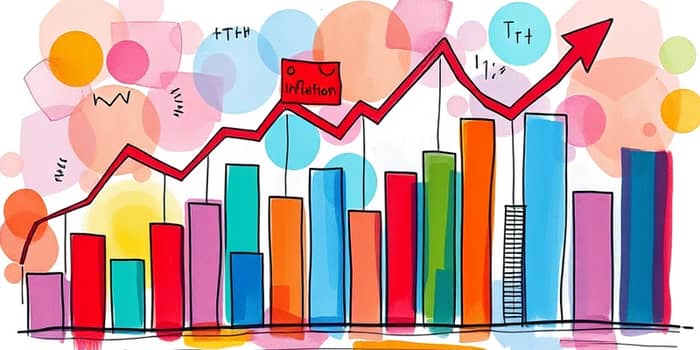
Inflation cycles shape investment outcomes in powerful ways. By backtesting sector returns from 1973 through 2024, investors can gain critical insights into which industries historically provided the best hedges against rising prices and when to rotate into defensive plays. This comprehensive guide combines rigorous methodology, historical data, and practical strategies to help you navigate future inflation regimes with confidence.
Inflation cycles typically move through two distinct phases: rising inflation periods, when consumer prices and producer costs accelerate, and falling inflation phases, when price growth moderates. These regimes influence interest rates, corporate earnings, and sector valuations.
Understanding these cycles is crucial because different industries demonstrate varied sensitivity to price pressures. Timing your sector allocations according to these shifts can enhance returns and manage downside risk.
To isolate the effects of inflation on sector performance, our analysis covers the period from 1973 to 2024. We incorporate multiple macroeconomic variables and employ robust statistical techniques to validate our findings.
Key macro variables include:
Our approach uses simple linear regression to isolate the impact of inflation on sector returns, verifying coefficients with t-tests, autocorrelation checks, and error normality tests. We also stress-test strategies using walk-forward analysis or different historical cycles to guard against overfitting and ensure robustness.
Sectors differ in how cost pressures and pricing power affect profitability. Industries heavily tied to commodity inputs, like energy, tend to benefit when prices rise, while businesses with long-dated cash flows, such as technology, often suffer.
Primary factors shaping sensitivity include revenue models, input cost structures, and pass-through pricing abilities across segments. Companies that can quickly adjust prices to reflect higher costs typically outpace those locked into fixed-price contracts or longer sale cycles.
Examining sector data from March 1973 through December 2024 reveals clear patterns in real returns and relative outperformance against inflation.
The energy sector emerges as the quintessential hedge, outperforming inflation nearly three-quarters of the time. Real estate investment trusts (REITs) also show resilience, while mortgage REITs and technology often lag when rates climb rapidly.
Defensive sectors such as utilities and health care can hold up in recessions but deliver mixed outcomes during pure inflationary spikes.
Overall, the S&P 500 exhibits a 61% positive-month hit ratio during rising regimes, improving to 71% in falling inflation periods. This dynamic underscores the value of sector rotation: overweight inflation-sensitive industries early in price surges and pivot to broad-market exposure as inflation subsides.
Sector leadership often aligns with phases of the economic cycle rather than inflation alone. Recognizing these patterns enhances timing accuracy when combining inflation focus with growth positioning.
Tactical sector shifts according to cycle phase can amplify returns and control drawdowns, especially when integrated with inflation outlooks.
A rigorous backtest must adjust for market beta to isolate inflation effects, using NBER business cycle dating and inflation thresholds (e.g., >4% for high inflation). Key performance metrics include Sharpe ratio, Sortino ratio, max drawdown to evaluate risk-adjusted returns.
Consistent validation and periodic reoptimization ensure your strategy adapts to evolving market dynamics.
While historical backtests offer valuable insights, past performance isn’t a predictor of future results. Inflation regimes intertwine with interest rate policy, currency movements, and global events, making pure attribution complex.
Investors should maintain flexibility, continuously monitor regime shifts, and adjust exposures as sensitivities evolve. Combining quantitative models with qualitative judgment and economic analysis delivers the most resilient approach to navigating inflation cycles.
References













